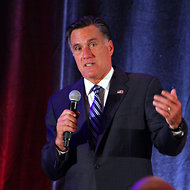Still, the case against Javier Martin-Artajo and Julien Grout, two of the bank’s traders, has larger lessons for investors and regulators. One has to do with the risks inherent in opaque, over-the-counter markets, where securities’ prices can’t be seen and so can be easily manipulated. Another involves the fairly significant leeway that financial firms have in valuing the securities they trade and hold.
According to prosecutors in the Southern District of New York, Mr. Martin-Artajo and Mr. Grout hid or understated losses in credit derivatives trades held by JPMorgan’s chief investment office during 2012.
Lawyers for both men say that they did nothing wrong and would be exonerated.
But the complaints against both men, laced with e-mails and transcripts of phone calls, indicate that the traders ignored the bank’s protocol for valuing the complex bets and chose instead to mark them in a way that would mask and minimize ballooning losses.
The bets were made on indexes that reflected the performance of a group of corporate debt obligations; the trader in charge of the portfolio had gambled that defaults among these debt issuers would rise. They did not.
It was an outsize bet. By the first quarter of 2012, the so-called synthetic credit portfolio had a total exposure of $157 billion, up from $51 billion in 2011. When the trade was finally and disastrously unwound, it cost the bank more than $6 billion in losses.
The exotic instruments that made up this portfolio did not trade on an exchange and so were harder to value than a stock, whose prices reflect actual market transactions. Because the credit derivatives traded privately, in a so-called dealer market, the traders had to get bids and offers from market participants to value the positions. Bids and offers are not the same as actual transaction prices, of course, but the standard procedure is to assign a value that is somewhere near the middle of the bids and offers.
When the trades went against them, the men deviated from that procedure to cover up some of the losses, prosecutors said.
“None of these trades were done on an exchange or exchangelike platform,” said Dennis Kelleher, president of Better Markets, a nonprofit organization that promotes the public’s interest in financial markets. “That’s how they were allowed to do two things — one, build up such a huge position with no one knowing and, two, misprice the securities.”
Indeed, Wall Street has fought to prevent the open trading of instruments like the ones at issue in the JPMorgan situation. Why? Profits are higher when instruments trade one-on-one rather than on an exchange. Customers who don’t know the price of a complex instrument can be easily overcharged.
Despite Wall Street’s objections, the Dodd-Frank law now requires many of these derivatives to be traded on exchanges or similar platforms. When the rules go into effect in coming months, prices and positions will be more apparent, reducing the possibility and surprise of a whalelike loss.
While the regulations have been written, there are still ways for Wall Street to water them down, like seeking certain exemptions, Mr. Kelleher said. And even the toughest laws and tightest rules can’t protect the financial system and taxpayers from risks posed by a major bank with lax internal controls.
ONE of the failures noted by prosecutors in the JPMorgan cases was the bank’s reliance on a single person in its valuation control group to serve as an independent check. That person was responsible for monitoring the values assigned to the chief investment office portfolio, which held tens of billions of dollars in positions. “In practice,” the complaint said, the control group “was neither independent nor rigorous.”

Article source: http://www.nytimes.com/2013/08/18/business/the-problem-with-wiggle-room-in-securities.html?partner=rss&emc=rss





